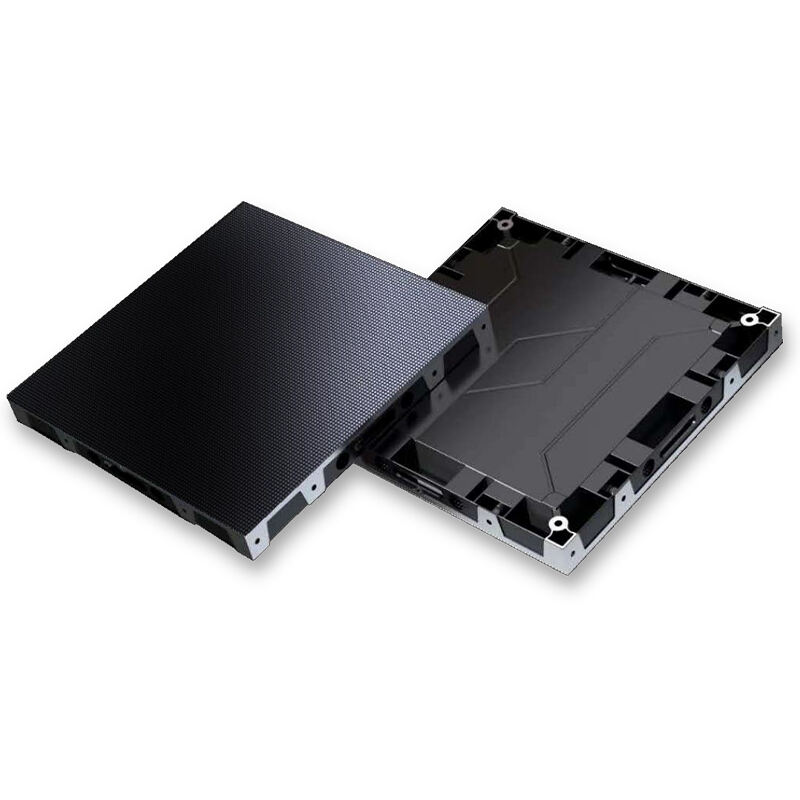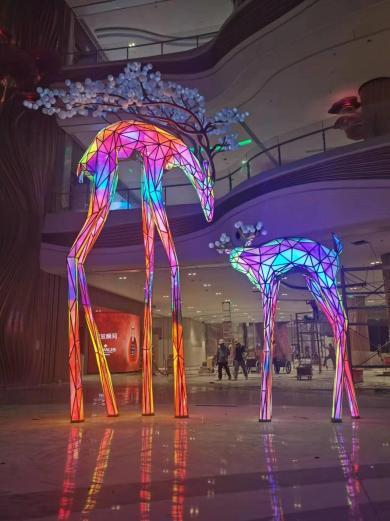Flexible LED display: innovative display technology
Understanding Innovative Flexible LED Display Technology
Flexible LED displays are a cutting-edge innovation in the realm of digital displays, distinguished by their adaptability and versatility. Unlike traditional LED screens, these displays are crafted from pliable materials, enabling them to bend, curve, and even fold. This unique flexibility allows for creative installations, such as cylindrical or wave-shaped displays, which can be tailored to fit the specific spatial dynamics of an environment.
The functionality of flexible LED displays is rooted in advanced technological components that facilitate their dynamic capabilities. The core of these displays consists of LED diodes mounted on a flexible substrate, usually a flexible Printed Circuit Board (PCB). This substrate is crucial as it provides the necessary elasticity while supporting the LED components. Additionally, the integration of sophisticated circuits, including driver ICs and controller boards, ensures precise power management and seamless visual content display. These features collectively allow for the creation of immersive and custom-configured visual experiences, making flexible LED technology an integral component in the evolution of modern display solutions.
Different Types of Flexible LED Displays
Flexible LED displays come in various forms, each serving specific purposes, especially in unique settings like architecture, advertising, and exhibitions. Curved and cylindrical displays are particularly popular because of their ability to blend seamlessly into diverse environments. Curved displays, whether concave or convex, are used in several settings such as concerts, malls, and art installations to create immersive visual experiences. Cylindrical displays, which provide 360-degree visuals, are frequently found in shopping malls and transportation hubs, enhancing visitor engagement with imaginative and innovative content presentation.
LED mesh and video walls also play crucial roles due to their lightweight design and ease of installation, making them highly versatile. LED mesh displays offer high visibility and are often used on building façades and large outdoor advertisements. In contrast, video walls are prevalent in indoor environments, such as conference centers and control rooms, providing dynamic and interactive visual platforms. The lightweight nature of these displays reduces the load on supporting structures and simplifies setup, allowing for quick deployment in environments where time and space are at a premium.
Applications of Flexible LED Displays in Advertising
The impact of flexible LED displays in retail is significant, enhancing consumer engagement and visual merchandising. These displays bring a new level of dynamism to physical stores by allowing retailers to create immersive visual experiences that captivate shoppers. Their versatility enables merchants to showcase products in vivid detail, making shopping more engaging and appealing.
Flexible LED displays are increasingly used in event spaces and exhibitions to create immersive experiences. Their adaptability allows them to be configured to fit various event formats, whether it's a trade show, concert, or interactive display. These displays provide vivid visuals that can transform any event space, drawing in attendees and maintaining their engagement with visually captivating presentations.
In summary, flexible LED displays serve as powerful tools in retail and event spaces. They enhance visual merchandising and provide adaptable, immersive experiences that engage audiences effectively. As the technology continues to evolve, these displays are likely to play an even more critical role in shaping advertising and event presentation strategies.
Key Benefits Offered by Flexible LED Screens
Flexible LED screens present unrivaled portability and adaptability for various marketing and environmental contexts. Their design allows for easy transportation and simple reconfiguration, making them ideal for businesses that frequently adjust layouts or marketing strategies. These displays can be rolled, curved, or bent, adapting effortlessly to diverse settings, which proves especially valuable for pop-up events, exhibitions, or mobile advertising campaigns.
Additionally, flexible LED screens are renowned for their superior resolution and exceptional durability. They consistently outperform traditional screens by delivering sharp, high-quality images that captivate audiences, even from various angles or distances. Their robust construction also ensures longevity, withstanding the wear and tear of frequent setups and take-downs without losing visual integrity. This durability, coupled with their vibrant clarity, solidifies flexible LED screens as a wise investment for businesses aiming to captivate their audience and maintain a reliable display solution.
The Future of Flexible LED Display Technology in Marketing
The future of flexible LED display technology in marketing is set to be transformative, offering brands the ability to engage audiences in dynamic and personalized ways. Flexible LED displays enable brands to create captivating visual experiences tailored to specific audiences and environments, allowing for more targeted and effective campaigns. This technology allows for dynamic content adaptation, making advertisements more relevant to the viewer’s preferences and behaviors, ultimately increasing engagement and conversion rates.
As technology evolves, flexible LED displays will likely integrate with augmented reality (AR) and other interactive elements to create more immersive experiences. For instance, the combination of LED displays with AR could transform how consumers interact with brands, offering real-time product demonstrations or virtual try-ons in retail spaces. Such innovations will not only captivate audiences but also provide valuable data and insights, enabling marketers to refine their strategies and deliver more impactful campaigns. The seamless integration of LED displays with digital technologies will be key in crafting compelling narratives that resonate well with today’s tech-savvy consumers.
Real-world Examples of Innovative Flexible LED Displays
Flexible LED displays have transformed various industries by offering dynamic and customizable visual experiences. In the retail sector, brands are leveraging these displays for eye-catching storefronts. For example, the fashion brand Burberry enhanced its Regent Street flagship store with curved LED installations that creatively display branding and marketing content. This initiative resulted in a significant increase in foot traffic and higher customer engagement.
In the entertainment industry, flexible LED displays are revolutionizing concerts and live events with immersive visual backdrops. The Rolling Stones' No Filter tour utilized flexible LED panels that could bend and curve around the stage, providing a unique scenic experience. This not only captivated audiences but also extended the range of creative possibilities for artists and event producers.
Lastly, in corporate events, companies like Samsung use flexible LED displays to create engaging, interactive environments. For instance, at tech summits, these displays facilitate dynamic presentations and immersive brand experiences. This application not only enhances brand visibility but also boosts participant interaction and information retention. Each real-world example substantiates the rising importance and effectiveness of flexible LED displays in advancing brand strategies across sectors.







 Hot News
Hot News